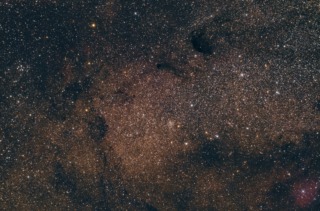
- Constellation: Sagittarius
- Right Ascension: 18h 17m
- Declination: −18° 29′
- Distance: 10,000 ly
Messier 24, one of the Messier objects that isn't a singular deep sky object, it is a dense concentration of stars located in the Sagittarius arm of our Milky Way Galaxy, hence it is often referred to the as the Sagittarius Star Cloud. A collection of millions of stars that can be seen through a gap of the Milky Way dust lanes. Also visible is NGC 6603 an open cluster located in the field of view, and various dark nebula that blot out background stars.
- Details
- Category: Open Clusters
- Telescope: EDT 80mm Reftactor
- Camera: ZWO A071 Color
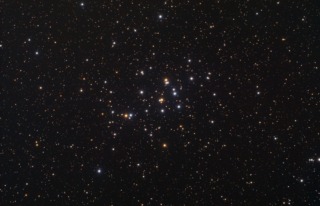
- Constellation: Cancer
- Right Ascension: 08h 40.4m
- Declination: 19° 59′
- Distance: 577 ly
Messier 44, or sometimes called the Beehive, is a open cluster located in the constellation of Cancer. At around 600 light years away, it is one of the closest open clusters to us along with the Pleiades and Hyades. M44 shares a common proper motion with the Hyades which suggests a common origin, and both have estimated age of around 600 million years. The cluster contains more than 1,000 stars with many of them being red dwarfs (68%).
- Details
- Category: Open Clusters
- Telescope: EDT 80mm Reftactor
- Camera: ZWO A071 Color
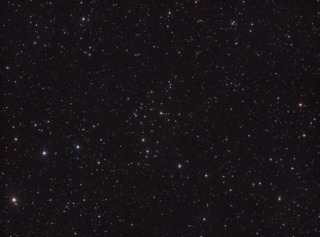
- Constellation: Gemini
- Right Ascension: 07 27 12
- Declination: +13 36 30
- Distance: 1,600 ly
NGC 2395 A loose scattered open cluster located in Gemini about 1600 light years away.
- Details
- Category: Open Clusters
- Telescope: Explore Scientific 127 Refractor
- Camera: ZWO 1600 MM
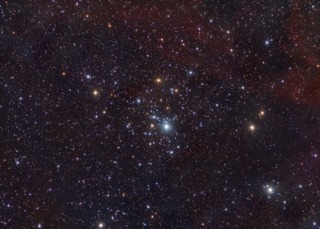
- Constellation: Cassiopeia
- Right Ascension: 02h 42m 43s
- Declination: +61° 38′ 00″
- Distance: 3,100 ly
NGC 1027, an open cluster located in Cassiopeia located 3,100 light years away, between the Heart and the Soul nebulae , but not associated with them (7,500ly distance), as is the bright star near the center (179ly distance).
- Details
- Category: Open Clusters
- Telescope: Explore Scientific 127 Refractor
- Camera: ZWO 1600 MM
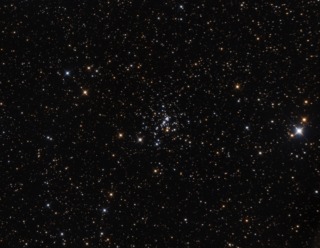
- Constellation: Cassiopeia
- Right Ascension: 01h 15m 58.0s
- Declination: +58° 48′ 42″
- Distance: 9,800 ly
NGC 436 is a small open cluster located in Cassiopeia, not far away from the more famous Owl or E.T. Cluster. Discovered by William Herschel in 1787.
- Details
- Category: Open Clusters
- Telescope: GSO RC10
- Camera: ZWO A071 Color
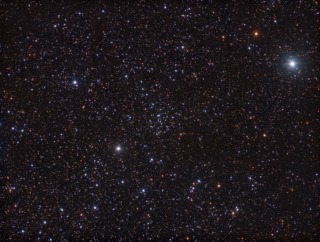
- Constellation: Cassiopeia
- Right Ascension: 01h 08m 19.9s
- Declination: +61° 35′ 02″
- Distance: 3,000 ly
NGC 381 is an open cluster located in Cassiopeia, somewhat difficult to make out due the the large number of stars visible in this area of the sky. Its estimated age is around 300 million years.
- Details
- Category: Open Clusters
- Telescope: Explore Scientific 127 Refractor
- Camera: ZWO 1600 MM